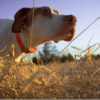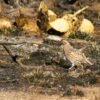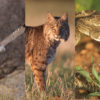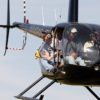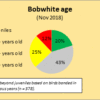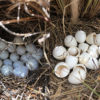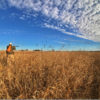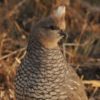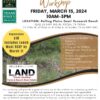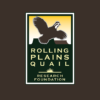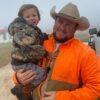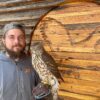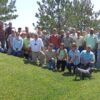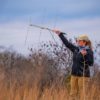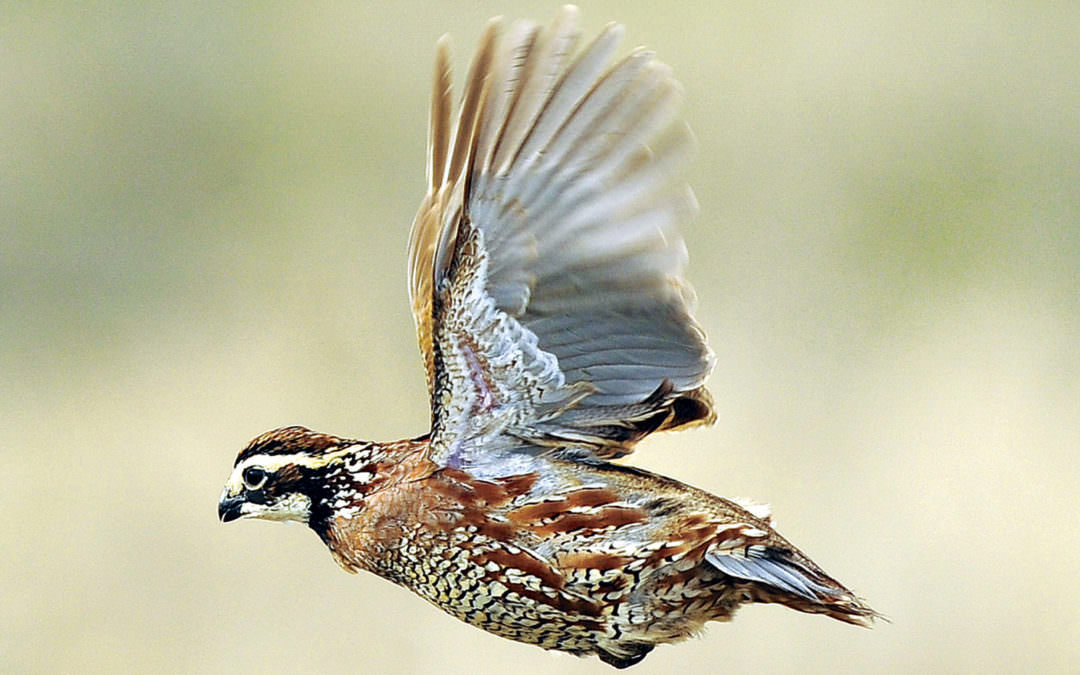
by Emily Vincik, John Palarski, and Brad Kubecka
Quail feathers are not often discussed, but are essential in survival and provide a benefit to managers/researchers for determining age.
The feathers that almost completely cover quail serve three major purposes. First, perplexing colors provide excellent camouflage while sitting still and hiding from predators. The mottled coloration pattern found across the bobwhite’s plumage allow them to blend in with their surroundings. These same feathers also act as an excellent insulating mechanism for thermoregulation. Feathers can trap a layer of warm air close to the skin that helps maintain body temperature. You may recall having seen bobwhites or other birds “puffed out” and looking much larger than normal during cold weather. These birds are actively trapping warm air next to their body to provide an added layer of insulation. Additionally, feathers allow quail to have lift and propulsion when flushing to avoid predators.
It’s not until about 8 days of age, though, that bobwhite begin to start growing pin-feathers, before which natal down predominates and neonates are extremely vulnerable to the elements. As bobwhite grow, they replace their feathers in a process called molting which occurs in a predictable manner allowing managers and researchers to determine age (first year or older) and even hatch date. At 28 days of age, bobwhite being the postjuvenal primary molt.
During this time, the growth and replacement of wing feathers called primaries can be used to age juvenile bobwhite within a matter of days since hatching. This might be thought of as analogous to tooth wear and replacement for aging deer, except bobwhite complete this molt at 150 days of age, when other metrics must then be used to age them. Bobwhite have 10 primary wing feathers that are replaced from the inside out. The 9th and 10th primaries are not molted during the postjuvenal primary molt and are retained for the first year until the post-nuptial molt the following Aug-Oct. The growth of the 9th and 10th primaries are complete at days 63 and 65, respectively. Researchers and managers use this molting pattern to deduce hatch timing, when radio-telemetry information is not available. This year’s long nesting season provides an excellent opportunity for hunters to evaluate their harvest and determine hatch timing.

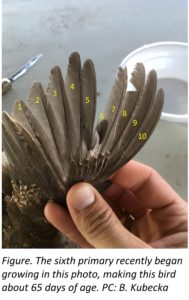 If a primary recently dropped and started growing, a trick to remembering the table above is to add 3 to the primary that just dropped. The resulting number describes the age, in weeks, of the bird. For example, if the second primary recently dropped then the age of the quail is approximately 2+3=5 weeks or 35 days of age (see the table for checking math!).
If a primary recently dropped and started growing, a trick to remembering the table above is to add 3 to the primary that just dropped. The resulting number describes the age, in weeks, of the bird. For example, if the second primary recently dropped then the age of the quail is approximately 2+3=5 weeks or 35 days of age (see the table for checking math!).
Similar to our tooth wear and replacement analogy, it is also possible to age quail “on the fly” (or on the hoof for deer fanatics). A bobwhite obtains its full facemask at about 4 months of age. Younger bobwhite will have cream colored facial markings until about 3.5 months old and retain natal down on the tops of their head until about 6 weeks.
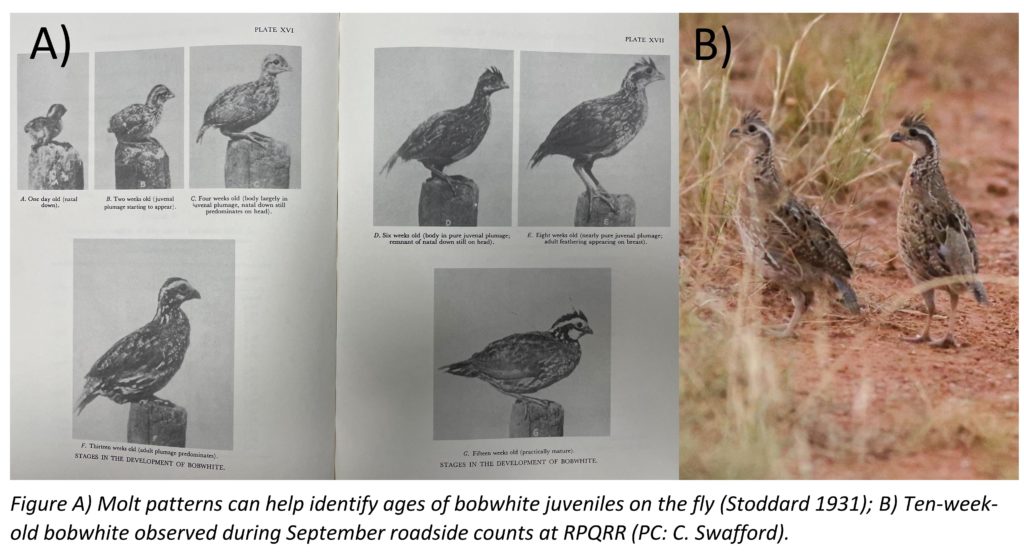
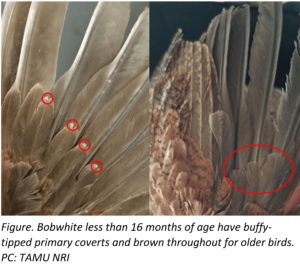 Most commonly, primary covert feathers are used to age individuals as either “juveniles” or “adults”. Primary coverts are short feathers located on top of the primaries. While these feathers do not play a large role in flight, they are very beneficial when differentiating between hatch year birds (less than 16 months of age) and after hatch year birds (> 16 months). Colloquially, these are lumped into “juveniles” and “adults”, but biologically speaking this terminology is incorrect. Adulthood is typically biologically defined by sexual maturity. Primary coverts are molted during the first postnuptial molt, August through October the year after hatching. Hatch year bobwhite will have buffy or white spots on the tips of their primary coverts while after-hatch-year bobwhite will be brown throughout. Generally speaking, high age ratios (“juvenile:adult”) are indicators of good reproductive success.
Most commonly, primary covert feathers are used to age individuals as either “juveniles” or “adults”. Primary coverts are short feathers located on top of the primaries. While these feathers do not play a large role in flight, they are very beneficial when differentiating between hatch year birds (less than 16 months of age) and after hatch year birds (> 16 months). Colloquially, these are lumped into “juveniles” and “adults”, but biologically speaking this terminology is incorrect. Adulthood is typically biologically defined by sexual maturity. Primary coverts are molted during the first postnuptial molt, August through October the year after hatching. Hatch year bobwhite will have buffy or white spots on the tips of their primary coverts while after-hatch-year bobwhite will be brown throughout. Generally speaking, high age ratios (“juvenile:adult”) are indicators of good reproductive success.


